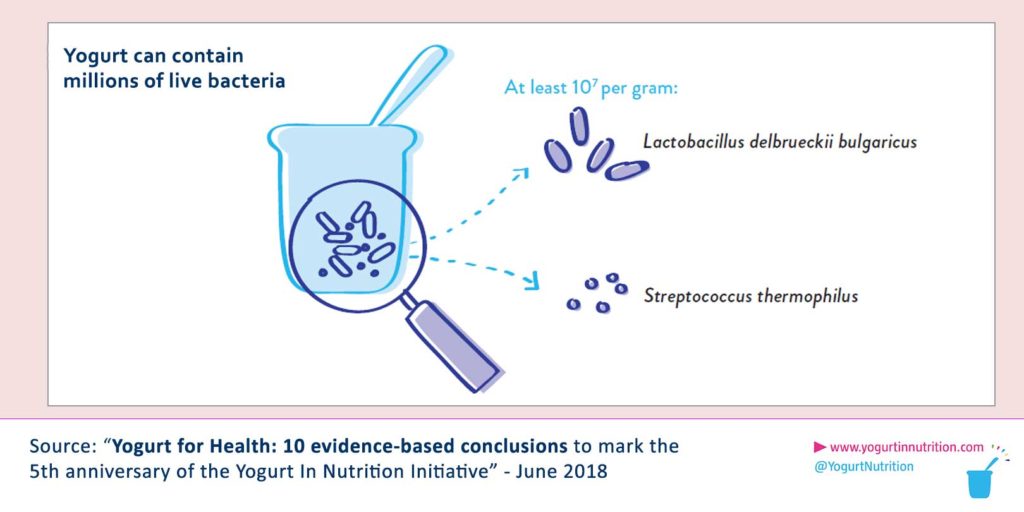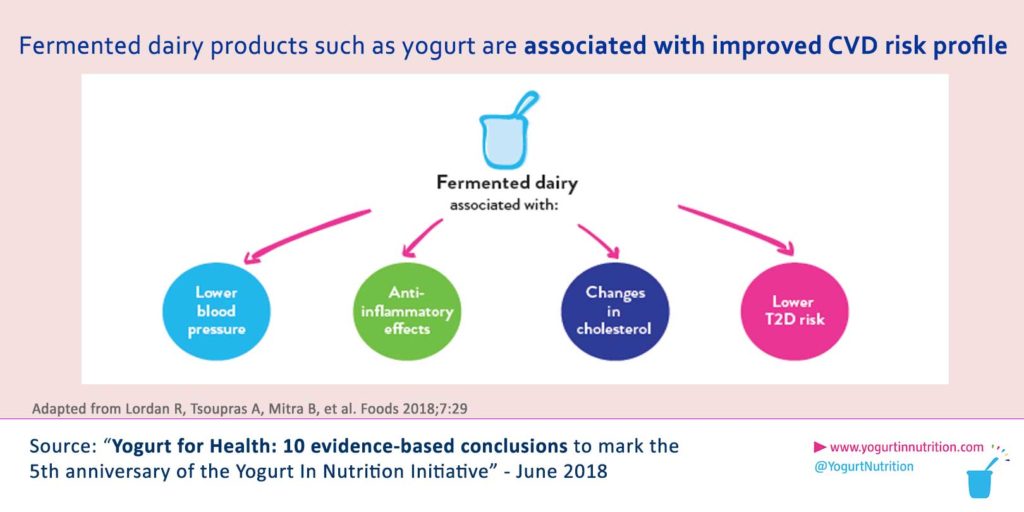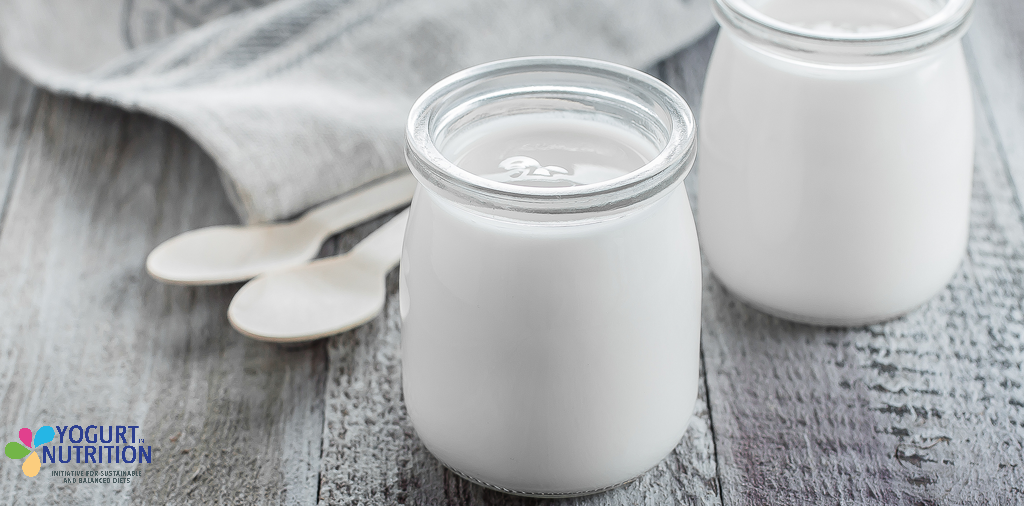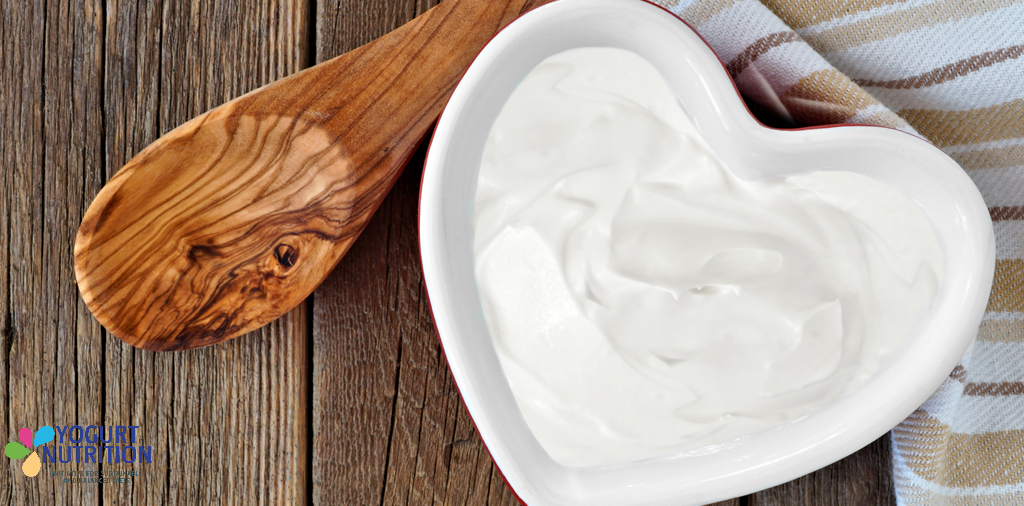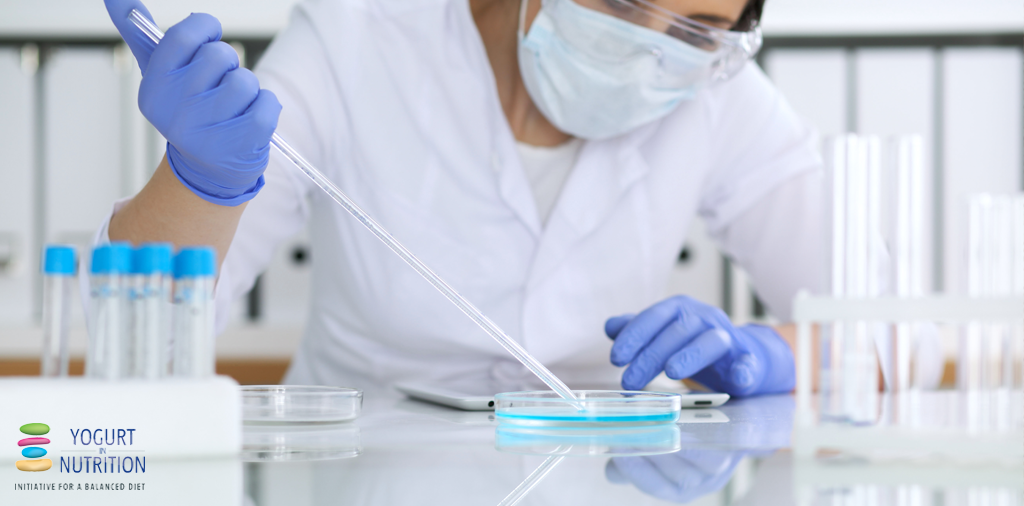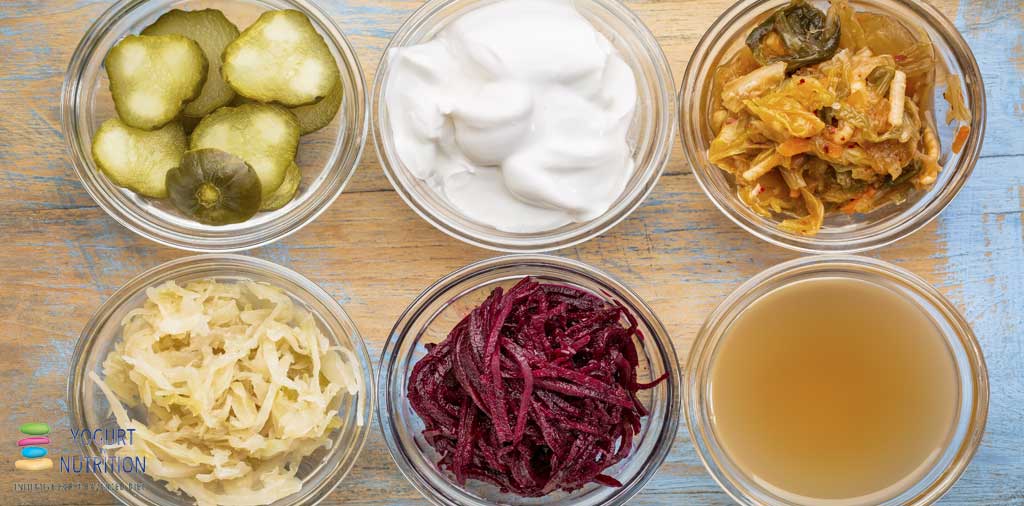Fermented food
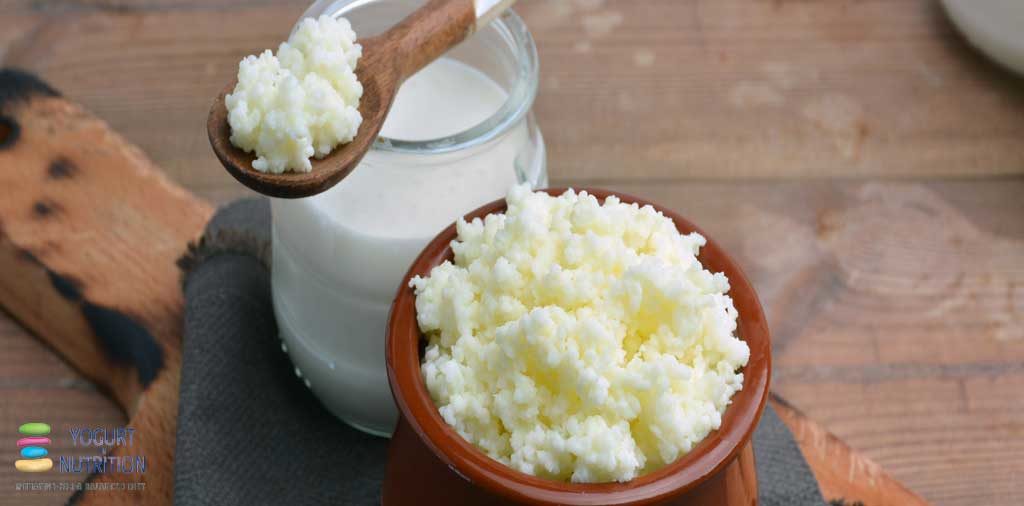 Fermented foods
Fermented foods
Fermented foods become increasingly popular, mostly thanks to their healthy image. With growing knowledge on the gut microbiota, scientists have discovered that some fermented foods may prevent from obesity, cancer, osteoporosis, or even mental health disorders. But how much do you know about fermented foods?
What are fermented foods?
Fermented foods are the result of the conversion of raw foods into “new foods” by microorganisms. Fermentation is a quite old process (8). Human beings have been eating fermented foods for 10,000 years. The first goal of fermentation was to improve the shelf life of a product. But it also enhances taste, structure and nutritional qualities. Fermentation matters a lot in shaping the final taste. This fermentation process provides a remarkable range of unique flavors that cannot be found otherwise.
Some examples of fermented foods:
- Yogurt, kefir, skyr, buttermilk or cheese (produced by yeast and/or bacterial fermentation of milk )
- Kombucha (fermented black or green tea drink)
- Sauerkraut (raw cabbage fermented by lactic acid bacteria) or kimchi (cabbage and/or radishes, fermented mainly by lactic acid bacteria)
- Miso, soy sauce (produced by fermentation of soy products)
- Wine (the grapes’ sugar is fermented by yeasts)
- Chocolate (the seeds of the cacao tree are fermented to develop their specific flavors)
- Coffee (some processes include a fermentation step with bacteria and yeasts to remove the pulp stuck on the seeds)
- Bread (the rise of the bread requires alcoholic fermentation of its sugars, which is done by yeasts)
Do all fermented foods contain living microorganisms?
Not all fermented foods contain live organisms. Some products, such as beer or wine, undergo steps which remove microorganisms. And, if they are not taken away, these microorganisms can be killed by heat treatments (in bread for example). Thus, many fermented foods do not contain live microorganisms (2).
Still, some of them show health benefits without live microorganisms, such as coffee or chocolate (where the coffee or cocoa beans have been fermented during the production process), which are rich in antioxidants that may improve heart health.
Only few of the fermented foods have a specific activity due to live ferments. Yogurt, kefir or fermented dairy foods with added probiotics are fermented foods with live “probiotic” activity.
Fermented foods may have beneficial effects on health.
The effects on health of the consumed fermented foods will depend on the presence of living ferment and the type of ferments provided by the products.
Studies show that fermented products with probiotics can influence the gut microbiota, leading to potential health benefits (1,2).
The gut microbiota (or microbiome) is famous for its extraordinary abundance in different microorganisms. Probiotics can foster some species that modulate your metabolism and therefore promote health.
Because of their healthy effects, modern fermentation techniques can add probiotics and prebiotics in fermented products in order to increase their benefits.
What is a probiotic?
The WHO (World Health Organization) defines probiotics as “Live microorganisms that, when administered in adequate amounts confer a health benefit on the host” (1).
That is to say, probiotics can be called such, only after they are characterized and provide clinical evidence of a health benefit. That is why not all fermented foods are probiotics. Probiotics can be found in fermented foods, among which are fermented dairy foods, and in probiotic-fortified products.
What is a prebiotic?
Prebiotics should not be confused with probiotics. The International Scientific Association for Probiotics and Prebiotics (ISAPP) defines prebiotics as “a substrate that is selectively used by a host microorganism to produce a health benefit” (3).
Most of the time, prebiotics are non-digestible fibers, that will induce the growth or activity of beneficial microorganisms already present in the gut microbiota.
What are the health benefits of fermented milks, such as yogurt?
Did you know that in a single cup of yogurt holds 108-10 viable bacteria? Actually, yogurt and fermented milks are amazing sources of live bacteria(6).
Yogurt, to be called so, must contain both living Lactobacillus bulgaricus and Streptococcus thermophilus. And these bacteria appear to be worth of interest. Yogurt, with its live cultures, can contribute to gut health.
Epidemiological studies highlight that yogurt consumption is commonly linked with :
- Reduced risks of Type 2 Diabetes (T2D),
- Reduced risks of cardiovascular diseases,
- Improved weight management.
And in the short term, it seems that eating yogurts can make you feel good by raising levels of serotonin. Serotonin is a neurotransmitter that modulates our mood. And high levels of serotonin are linked to well-being (9).
What’s happening in your gut when eating a yogurt or fermented milk?
The gut microbiota plays an important role in keeping us healthy. Researchers say the healthy effects probably come from the beneficial end products of some microorganisms once they reach the gut.
The most famous microorganisms involved in the process are the yogurt culture starters Streptococcus thermophilus and Lactobacillus delbrueckii subsp. Bulgaricus. Strains of Bifidobacterium and Lactobacillus can also be mentioned for their probiotic features.
Lactic Acid Bacteria (LAB) are commonly used for dairy fermentation. While fermentating, the LAB generate bioactive metabolites such as peptides, which are delivered when proteins break down, whether it happens throughout milk fermentation or in the gut.
There are several peptide types. Some, called bacteriocins, are anti-microbial, they can kill other species of bacteria or prevent them from multiplying. These peptides modulate the gut microbiota (4,5,6).
Bioactive peptides promote health because they are believed to:
- lower blood pressure
- have anti-clotting activities
- have an anti-oxidant activity
- influence the immune response
- improve insulin sensitivity
Yogurt-type peptides are worth mentioning since they have anti-inflammatory effects that are greater than those of any other dairy product (6).
Different fermented milks
Among all fermented dairy products we can mention:
- Yogurt and Greek yogurt (milk fermented exclusively by Lactobacillus bulgaricus and Streptococcus thermophilus )
- Sour cream (once milk is collected from farms, it is divided into two products through centrifugation; cream and skim milk. Cream is the low density fraction. After fermentation, the cream becomes sour cream)
- Cheese (the milk is coagulated by specific enzymes, then fermented. Depending on the time of maturation and on different potential stages of cooking and pressing, different types of cheese are obtained: soft or hard cheese)
- Kefir (drink made from fermented milk, fermentation includes specific bacteria such as Torula kefir and yeasts such as Saccharomyces kefir)
- Skyr (fermented fresh acid-curd soft cheese made from skim milk)
- Rayeb, laban, labneh or Ayran, which are fermented milks originated in the Middle East more than 10,000 years ago and have remained essential in the diet of most Arab countries.
What’s left to know about fermented foods?
It is now agreed by researchers that microorganisms leading fermentation are responsible for the effects of fermented foods. Meanwhile there is probably a lot more to learn about fermented foods.
Research now focuses on the links between gut, microbiota and brain. The goal is to discuss if and how probiotics and prebiotics could affect our behavior.
A lot remain also unknown regarding the way microorganisms are delivered in our body, through ingested foods and the key role of the “food matrix” (6). The relationship between the food matrix, the survival of bacteria and the way bacteria protect our health, is investigated.
Learn more about the different fermented milks around the World:
Sources / references:
[1] World Health Organization; Food and Agriculture Organization of the United Nations. Joint FAO/WHO Working Group Report on Drafting Guidelines for the Evaluation of Probiotics in Food; London, Ontario, Canada, April 30 and May 1, 2002
[2] Gibson GR, Hutkins R, Sanders ME, et al. Expert consensus document: The International Scientific Association for Probiotics and Prebiotics (ISAPP) consensus statement on the definition and scope of prebiotics. Nature Reviews Gastroenterology & Hepatology. 2017; 14: 491–502.
[3] Gibson GR & Roberfroid MB. Dietary modulation of the human colonic microbiota: Introducing the concept of prebiotics. Journal of Nutrition. 1995; 125(6): 1401-12.
[4] Goulet, O., Potential role of the intestinal microbiota in programming health and disease, Nutrition Reviews, August 2015, Vol 73(8), pp. 32-40.
[5] Hill D, Sugrue I, Arendt E et al. Recent advances in microbial fermentation for dairy and health. F1000Res. 2017;6:751.
[6] Kongerslev Thorning T. et al. Whole dairy matrix or single nutrients in assessment of health effects: current evidence and knowledge gaps. American Journal of Clinical Nutrition. First published ahead of print April 12, 2017.
[7] Savaiano DA, Hutkins RW. Yogurt, cultured fermented milk, and health: a systematic review. Nutr Rev. 2020 May 23;nuaa013.
[8] Tamang JP, Cotter PD, Endo A et al. Fermented foods in a global age: East meets West. Compr Rev Food Sci Food Saf. 2020;19(1):184-217.
[9] Perez-Cornago A. et al, Intake of High-Fat Yogurt, but Not of Low-Fat Yogurt or Prebiotics, Is Related to Lower Risk of Depression in Women of the SUN Cohort Study, (2016)J Nutr, 146 (9) : 1731-1739


